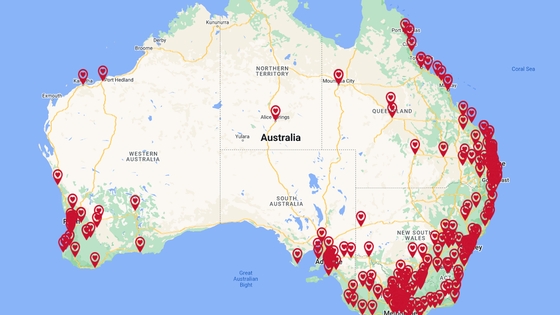
What is a heart attack?
What is a heart attack?
Key takeaways
2 min read
- A heart attack happens when there is reduced blood flow to the heart, causing permanent damage to the heart muscle.
- The most common cause of a heart attack is coronary heart disease, where plaque builds up in the arteries supplying blood to your heart.
- Warning signs of a heart attack include pain or discomfort in your chest, arm, shoulder, back, neck or jaw, shortness of breath, dizziness or feeling lightheaded, sweating, feeling sick (nausea or vomiting) or extreme fatigue.
- A heart attack is a medical emergency. Call Triple Zero (000) right away if you think you are having a heart attack.
What causes a heart attack?
Coronary heart disease is the most common cause of heart attacks and angina.
Like any muscle, the heart needs its own blood supply. The blood vessels that supply blood to the heart are called coronary arteries. These arteries sit on the heart’s surface.
Coronary heart disease occurs when fatty material called plaque builds up inside the coronary arteries. Plaque is made of fat, cholesterol and other substances.
During a heart attack, plaque from the artery wall breaks away (ruptures) and can form a clot. This can block the flow of blood through the artery and cause damage to the heart muscle.
The longer the blockage is left untreated, the more damage that happens to your heart. This is why a heart attack is a medical emergency.
What are the warning signs of a heart attack?
Common warning signs of a heart attack include:
- chest pain or discomfort. This can feel like pressure, squeezing, gripping, tightness, heaviness, burning or crushing.
- pain or discomfort in any of these areas: arm, shoulder, jaw, neck and back
- shortness of breath
- dizziness or feeling lightheaded
- sweaty
- sick (nausea/vomiting)
- extreme fatigue.
Chest pain is the most common symptom of a heart attack in both women and men. But many people who have had a heart attack also describe having non-chest pain symptoms.
If you have any of these symptoms, it could be a heart attack. Call Triple Zero (000) right away. Remember that every minute counts for someone having a heart attack.
Download our warning signs of a heart attack infographic or order a hard copy of our warning signs magnet.
Are there other causes of a heart attack?
Yes, there are other causes of a heart attack. Not all heart attacks are caused by coronary heart disease.
Some heart attacks happen when a coronary artery contracts (spasms) and narrows. Like coronary heart disease, this also reduces or stops blood flow reaching your heart. If an artery has a severe spasm, it can cause a heart attack.
A heart attack can also happen when the wall of a coronary artery splits, and blood flows between the layers of the artery wall instead of to the heart muscle. This is known as spontaneous coronary artery dissection.
How do I know if I’m having a heart attack and not something less serious?
It’s not possible to diagnose a heart attack based on your symptoms alone. Some people will experience the classic ‘Hollywood’ heart attack, with crushing chest pain. Other people might have milder, less obvious symptoms.
The only way to know what you’re experiencing is to seek urgent help. At worst, you may have something less serious. At best, you will receive the treatment that you need.
Do not ignore the warning signs of a heart attack. Every minute counts.
Can’t I just drive myself to hospital?
An ambulance is the safest way to go to hospital and the quickest way to seek treatment. Treatment starts when the ambulance arrives, saving precious minutes and preventing damage to your heart muscle.
If you’re experiencing the symptoms of a heart attack, call Triple Zero (000) right away. The operator will ask questions to help decide if you need an ambulance and how urgently. They will also tell you what you need to do next. This might include taking aspirin if you have it.
What is the difference between a heart attack and a cardiac arrest?
Heart attack
A heart attack occurs when an artery supplying blood to your heart becomes blocked, which stops blood flow and reduces the amount of oxygen that gets to your heart.
A person having a heart attack is usually conscious and may be complaining of chest pain or other symptoms.
If a heart attack isn’t treated, it can sometimes lead to a cardiac arrest.
Cardiac arrest
A cardiac arrest occurs when your heart stops beating due to an electrical malfunction in the heart.
A person in cardiac arrest will be unconscious (not able to respond) and will not be breathing. This is because their heart has suddenly stopped beating and blood can no longer flow to the brain, heart and lungs.
Like a heart attack, a cardiac arrest is a medical emergency. If the heart is not restarted immediately, cardiac arrest can lead to brain damage and then death. Every second counts.
If you think someone is in cardiac arrest, call Triple Zero (000) immediately. Giving chest compressions and using an automated external defibrillator (AED) can improve a person’s chance of survival.
What are the risk factors for a heart attack?
Heart attacks are usually caused by coronary heart disease. There are several risk factors for coronary heart disease. There are some you can change, and some that you can’t. Focus on the things you can change. Learn more about risk factors for heart disease and the heart-healthy changes you can make.
Risk factors you can manage:
- High blood pressure
- High cholesterol
- High blood sugar levels (diabetes)
- Unhealthy diet
- Being physically inactive
- Being overweight or obese
- Smoking and/or vaping
- Drinking too much alcohol
Risk factors you can't change:
- Family history of premature coronary heart disease
- Getting older
- Being male
- Being post-menopausal
- Cultural background – people of certain cultural backgrounds, including First Nations peoples, have increased risk of coronary heart disease
How is a heart attack diagnosed?
Once you get to hospital, your doctor will ask about your symptoms, your risk factors and medical history and family history. They will also do a physical examination.
Your doctor will arrange some tests to investigate the cause of your symptoms. These tests might include:
- troponin blood test. Troponin is a protein that is released into the blood when heart cells are damaged. A high troponin levels suggests you could be having a heart attack.
- electrocardiogram (ECG). An ECG is an electrical tracing of the heart. Certain ECG findings suggest you might be having a heart attack.
- coronary angiogram or CT coronary angiogram – a type of imaging that shows blockages in your coronary arteries. If the doctor finds a blockage, they will usually insert a stent at the same time to keep the artery open.
Read more about medical tests for heart disease.
How is a heart attack treated?
If you are having a heart attack, you need emergency treatment to restore blood flow to your heart. The faster this happens, the less the heart muscle is damaged. There are three main ways to do this. Your doctor will discuss the best option for you.
Procedures/surgery
Percutaneous coronary intervention
This procedure is also called a coronary artery and stent insertion. This procedure uses a tiny balloon to widen your narrowed arteries. It’s often carried out at the same time as a coronary angiogram. A long tube (catheter) with a tiny balloon on the end is put into an artery in your groin, arm or wrist. It’s guided up into the heart’s artery. The balloon is blown up at the narrowed part of your artery. The cardilogist inserts a small mesh tube (stent) to keep the artery open after the catheter is removed.
Fibrinolysis
Not everyone having a heart attack can be treated with coronary angioplasty and stents. In this case, your doctor might arrange for you to have a procedure called fibrinolysis. Your doctor will give you a medicine through a drip to dissolve blood clots that are narrowing or blocking a coronary artery. Dissolving the clot improves blood flow to your heart muscle.
Coronary artery bypass graft surgery (CABG, sometimes pronounced ‘cabbage’)
This type of surgery also improves blood flow to the heart. A healthy blood vessel (or more than one) is taken from your chest, leg or arm, and attached (grafted) to each side of your blocked artery. This lets blood go around or ‘bypass’ the blockage.
You will usually stay in hospital for two to five days after a heart attack, depending on what treatment/s you have had and how well you begin to recover. Read more about CABG surgery.
Medicines
While you’re in hospital, your doctor will prescribe several medicines to help treat your heart attack and to help keep you well. Common types of medicines prescribed after a heart attack are described in the table below.
| Medicine type | How they work |
|---|---|
| Medicines to stop blood clots forming | Anticoagulants and antiplatelets can help prevent blood clots forming. Anticoagulants can also treat existing blood clots. If you have a stent, these medicines can help prevent blood components from sticking together and forming clots. Examples of these medicines include aspirin, clopidogrel, warfarin and apixaban. |
| Medicines to manage blood pressure | These medicines can help maintain a healthy blood pressure to improve the flow of oxygen-rich blood around the body. Some help the heart to pump more easily and more efficiently. Blood pressure medicines are also often prescribed to people who have had a heart attack or stroke to reduce the risk of further events. There are many different types of blood pressure medicines including:
|
| Medicines to manage cholesterol | These medicines help improve your cholesterol and can prevent fatty plaques building up in blood vessels (arteries). These medicines also stabilise fatty plaques in the arteries, helping to prevent them from rupturing. The names of these medicines often end in ‘statin’. |
| Medicines to prevent and treat angina (chest pain) | These medicines are commonly called ‘nitrate medicines’. They improve the flow of blood and oxygen to the heart muscle.
|


